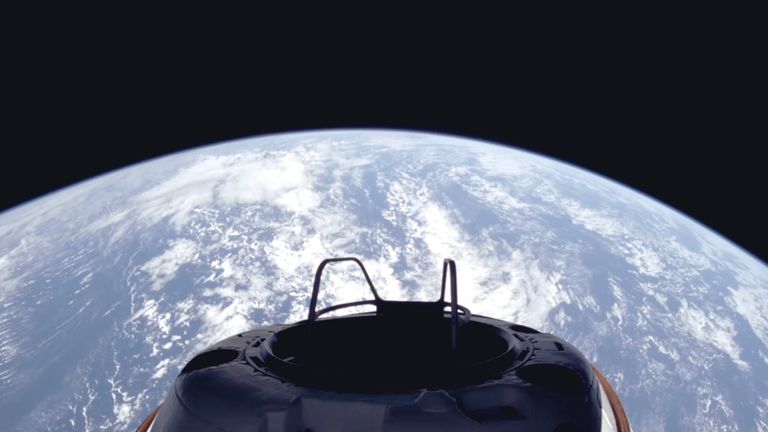The crew of a privately-funded space mission will today attempt the first spacewalk by non-professional astronauts.
The commander of the Polaris Dawn expedition – and one of his crewmates – will leave the relative safety of the SpaceX Dragon capsule more than 400 miles above the Earth and spend several minutes in the vacuum of space.
A spacewalk is considered one of the most dangerous activities an astronaut can do in orbit.
But the Polaris Dawn crew will do it without the usual training, from a space capsule that doesn’t have a safety airlock, while testing an experimental spacesuit.
Jared Isaacman, who is commanding and bankrolling the mission, said before lift-off: “Whatever risk is associated with it, it is worth it.”
It’s the first time since the early days of space travel that astronauts have attempted a spacewalk without an airlock.
The double-doored chamber – used on the International Space Station (ISS) and the US Space Shuttle – allows crew to exit to space while still sealing the rest of the spacecraft from the vacuum.
But Dragon is too small and not designed to host spacewalks.
So the entire capsule has been modified – from fittings to computers – to allow it to be depressurised for the two-hour event. Even the two crew members staying on board will have to wear full spacesuits to survive.
Mr Isaacman and crewmate Sarah Gillis will exit the capsule from an adapted hatch in the nose, using handrails to guide them through the narrow opening.
They’ll be attached to life support systems on board by an umbilical hose that provides power, communications and pure oxygen.
Once outside they will perform a series of tasks to test out a new SpaceX spacesuit. Critically it must allow full mobility, while still insulating astronauts from harsh extremes of temperature.
The suit itself is far slimmer than the bulky protective layers worn by NASA astronauts.
Data can also be displayed on the inside of the helmet visor.
Ms Gillis, a SpaceX employee, said in a video released of her training for the spacewalk: “So far only countries have been able to perform a spacewalk.
“Space X has huge ambitions to get to Mars and make life multiplanetary.
“In order to get there, we need to start somewhere. And the first step is testing out the first iteration of the spacesuit so that we can make spacewalks and future suit designs even better.”
To reduce the risks of a spacewalk, astronauts on the ISS repeatedly rehearse each task while wearing their suits in a deep-water pool to mimic weightlessness. Even small movements in zero gravity push astronauts in the opposite direction.
But the Polaris Dawn team didn’t have access to a pool, so improvised the feeling of zero gravity while being suspended from ropes and pullies.
The crew has been training for more than two years, but only Mr Isaacman has been to space before, once.
While astronaut safety on NASA missions is rigorously overseen by the agency, there are no such US standards or laws for spaceflight safety in private missions like Polaris.
